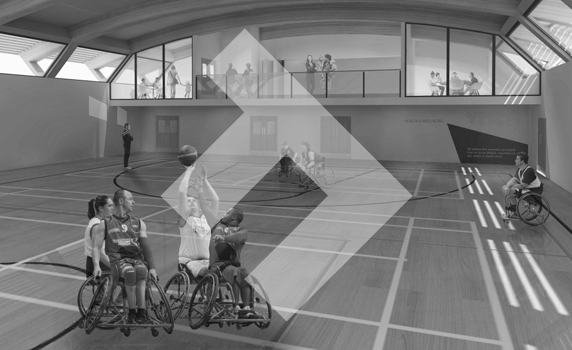In general, the environment for disabled athletes is on an improving trend. Paralympic sport has enjoyed a 70-year long journey – beginning as a rehabilitation method for wounded soldiers to now being a respected sport, with Paralympians competing on the grandest stage, broadcasted to hundreds of countries around the world. The “paralympic effect”, which resulted from the popularity of 2012′s Paralympics, helped to drastically increase awareness for athletes competing with disabilities, and Sport England has made an increase in inclusive sport for adults one of its priorities going forwards.
What are inclusive sports?
The concept of inclusive sports is a recent one, and its design is to bridge the gap between activities exclusive to disabled and non-disabled athletes in sports. This is achieved by making adaptations to existing sports to bring disabled athletes into the game, while keeping the game itself fun for everyone playing.
How inclusion is conducted
A coach running a session with both able and disabled athlete(s) should make use of the inclusion hierarchy. Ideally, the coach would need to make no adjustments – the disabled athletes would play alongside everyone else, with no changes made to either equipment or rules. For example, a deaf swimmer competing alongside hearing swimmers – no fundamental adjustments are needed. When transparent inclusion proves impossible, the spectrum comes into play:
- Open activity: a simple game everyone takes part in with no adjustment
- Modified activity: everyone plays the same game, but with a small adjustment, such as allowing an athlete with mobility issues to use a walker and take extra time on the ball in basketball.
- Parallel activity: everyone does the same sport, but are grouped according to ability.
- Separate activity: disabled athletes take part in a specially planned separate activity.
- Disability sport: non-disabled athletes take part in a disability sport alongside disabled athletes using modified rules or equipment.
For individual disabilities, a coach applies a SPACE (Space, Task, Equipment, People, Speed) to specialise the activity for the disabled athletes they’re organising a game for.
Is it really on the rise?
Yes. The most recent study into the effectiveness of inclusive sport concluded that there is a significant impact on the number of sports being played by disabled athletes because of inclusive sports. The same study found that there are better attitudes towards sport in the disabled community, and more disabled people see sport as a viable lifestyle option.
What you can do to help
Sport England has spent over 18 million pounds on developing inclusive sports for athletes over the age of 14, and similar initiatives are in place in Northern Ireland, Scotland and Wales. If you want to make a difference for inclusive sport in your area, you can apply for funding, or at least familiarise yourself with the inclusion spectrum and the STEPS model so you can help at a local level.
Have you or your family taken part in inclusive sports and have an experience you’d like to share? Let me know in the comments, we’d be delighted to hear about it!
![]()
 Instagram
Instagram Pinterest
Pinterest Facebook
Facebook Twitter
Twitter YouTube
YouTube




 Paul
Paul 



